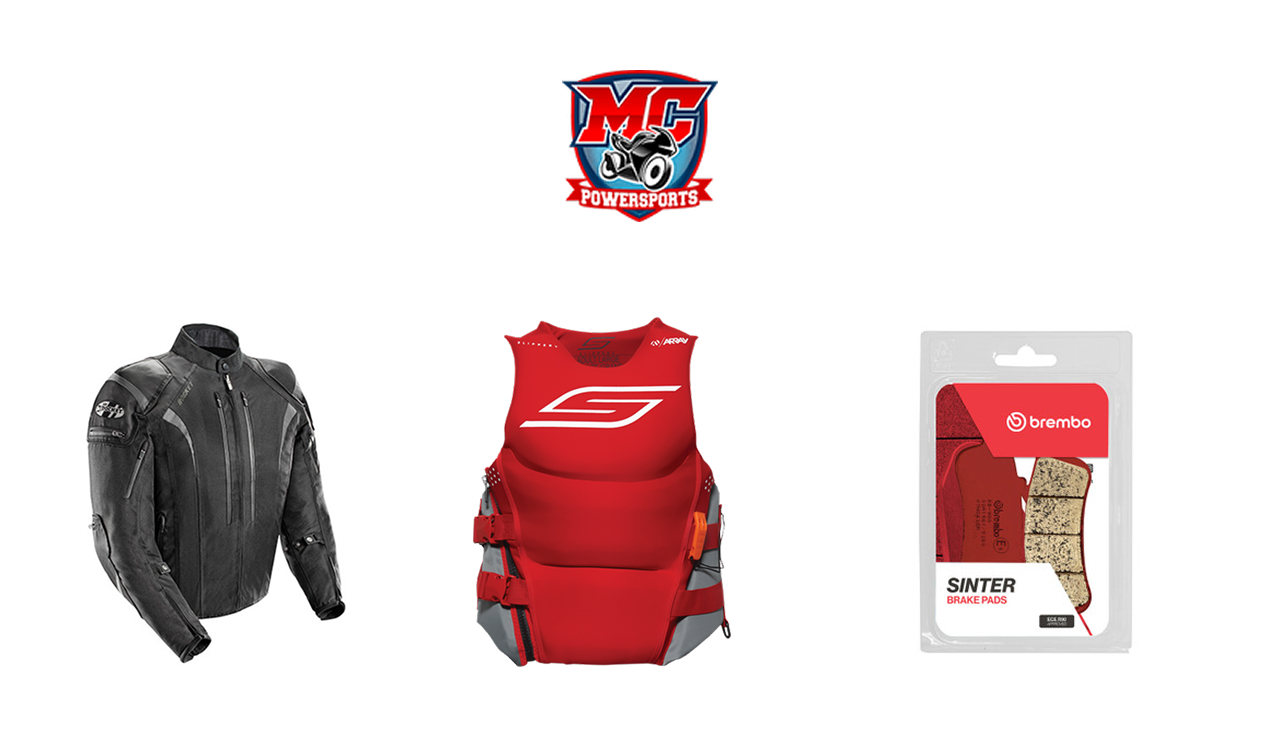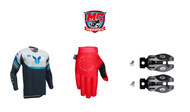Packing for a Motorcycle Road Trip: Must-Have Gear Checklist
Posted by undefined
There simply is nothing like the feeling of riding a motorcycle on the open road. It is an unmatched feeling, almost impossible to express in words and something one has to experience for themselves. However, to make an attempt: It's the ultimate expression of freedom, a chance to trade the daily grind for the rhythm of the engine and the blur of the horizon.
Now, if you're sold on the idea of taking a journey on your motorcycle, let us talk about how to prepare for it. Smart packing is the difference between an epic journey and a miserable lesson in roadside regrets.
Your bike has limited real estate, so every item needs to earn its spot. Let's dive into the essential motorcycle road trip gear you absolutely must have, starting with the non-negotiables: your safety armor.
Safety First: Essential Motorcycle Riding Gear
When you're out there, riding the highway on a motorcycle, there are no airbags; you have to make sure you are protecting yourself using the appropriate riding gear. If there is anything you must carry during a journey on a bike, it is gear. No exceptions, and don't let anyone tell you otherwise.
The Indispensable Motorcycle Helmet
We won't go too deep in biology or philosophy here, but we all agree the most important part of the human body is the brain, sheltered within our heads. So, protecting it is numero uno priority.
In order to do so, we recommend getting a high-quality, certified motorcycle helmet. And since the agenda is long tours, look for a helmet that is comfortable for long rides, has good ventilation, a sun visor, and minimal wind noise.
The battle between open face vs full face helmets rages on, but there is no debate about the fact that the latter option is objectively more safe and comfortable for longer rides.
The Protective Shell
You are also going to need armor on your body, so consider investing in a riding jacket and pants, not just your favorite pair of jeans and a denim jacket. Yes, you may feel more comfortable riding in those, but they offer no protection during a slide.
Modern riding jackets and pants have built-in armor at key impact points, such as the shoulders, elbows, hips, and knees. Many also feature removable thermal and waterproof liners, which are fantastic for handling those unpredictable weather swings you're bound to encounter on a long journey.
Hands and Feet
Your hands and feet deserve protection, too, of course. No part of the body is "unimportant." Thankfully, all you need to protect them is a pair of solid riding gloves (preferably with knuckle and palm protection) and over-the-ankle rain-ready boots with waterproof protection.
For Comfort and Convenience on the Road
Alright, once safety gear, the necessity, is taken care of, let's get to items that will make the trip more enjoyable and comfortable. Remember, less is almost always more when you're packing on two wheels, but these will definitely justify the space they take up.
Clothing for All Climates
Layering is the key to packing clothes for a motorcycle trip. Obviously, depending upon the weather and climate, your wardrobe will be decided. However, generally, what you need is moisture-wicking base layers, add a mid-layer like a fleece for warmth, and then your protective outer layer.
Carry some casual clothes, shoes, as well as a compact rain suit because riding in the rain is not the most comfortable experience. Also, consider rolling up your clothes, army style, to save space. You'll find plenty of YouTube videos showing how to do so.

Documents and Paperwork
Nothing is worse than getting pulled over, having all the required documents but at home. That feeling of regret is something we wish upon nobody. So, keep all required papers organized within a waterproof bag.
Your document checklist should include:
- Driver's License with a motorcycle endorsement.
- Motorcycle Registration and Insurance paperwork.
- Emergency contact list (ICE, In Case of Emergency), including any necessary medical information.
- A spare key for your bike, kept separate from the one in the ignition.
Tools, Spares, and Emergency Prep
Relax, we won't ask you to become a master mechanic; though learning the basics is always recommended. Keep that latter advice in mind, carry with you a basic tool kit as it can be a lifesaver at times for minor roadside adjustments.
This should be a bike-specific kit, including things like a small wrench set, screwdrivers, a tire pressure gauge, and a puncture repair kit with an air source (like a portable compressor or CO2 cartridges). Don't forget zip ties and duct tape, the ultimate universal repair materials. A small, well-stocked first aid kit, complete with pain relievers, bandages, antiseptic wipes, and any personal medications, is also a must-have.
Electronics and Navigation
A reliable GPS is also needed if you're going to go to places where your phone won't work. You can always use the offline maps feature if you don't want a full-blown GPS system though.
Conclusion
A motorcycle road trip is about seizing the moment, but that spontaneity relies on solid preparation. By prioritizing your essential motorcycle riding gear, especially your motorcycle helmet, and meticulously checking off your motorcycle road trip checklist, you set yourself up for thousands of miles of glorious, two-wheeled freedom. Pack light, pack smart, and always be prepared for the unpredictable turns of the road. Your adventure awaits.
Frequently Asked Questions
How do I secure my luggage to prevent it from shifting on the road?
Use high-quality bungee cords, cargo nets, or Rok Straps to tightly secure all bags to the bike's frame or luggage racks. Check the tension regularly during stops, as luggage can settle and straps can loosen over time.
Are regular hiking boots okay if I don't have dedicated riding boots?
While dedicated riding boots are superior, if you must use an alternative, opt for sturdy, over-the-ankle hiking boots with good support and non-slip soles. Avoid anything low-cut or lace-up shoes, as laces can get caught on footpegs or controls.
What's a good way to stay hydrated during a long ride?
A hydration pack (like a CamelBak) worn as a backpack or underneath your riding jacket is an excellent solution, allowing you to sip water without having to stop. Alternatively, carry a durable, reusable water bottle and take frequent breaks to drink.

